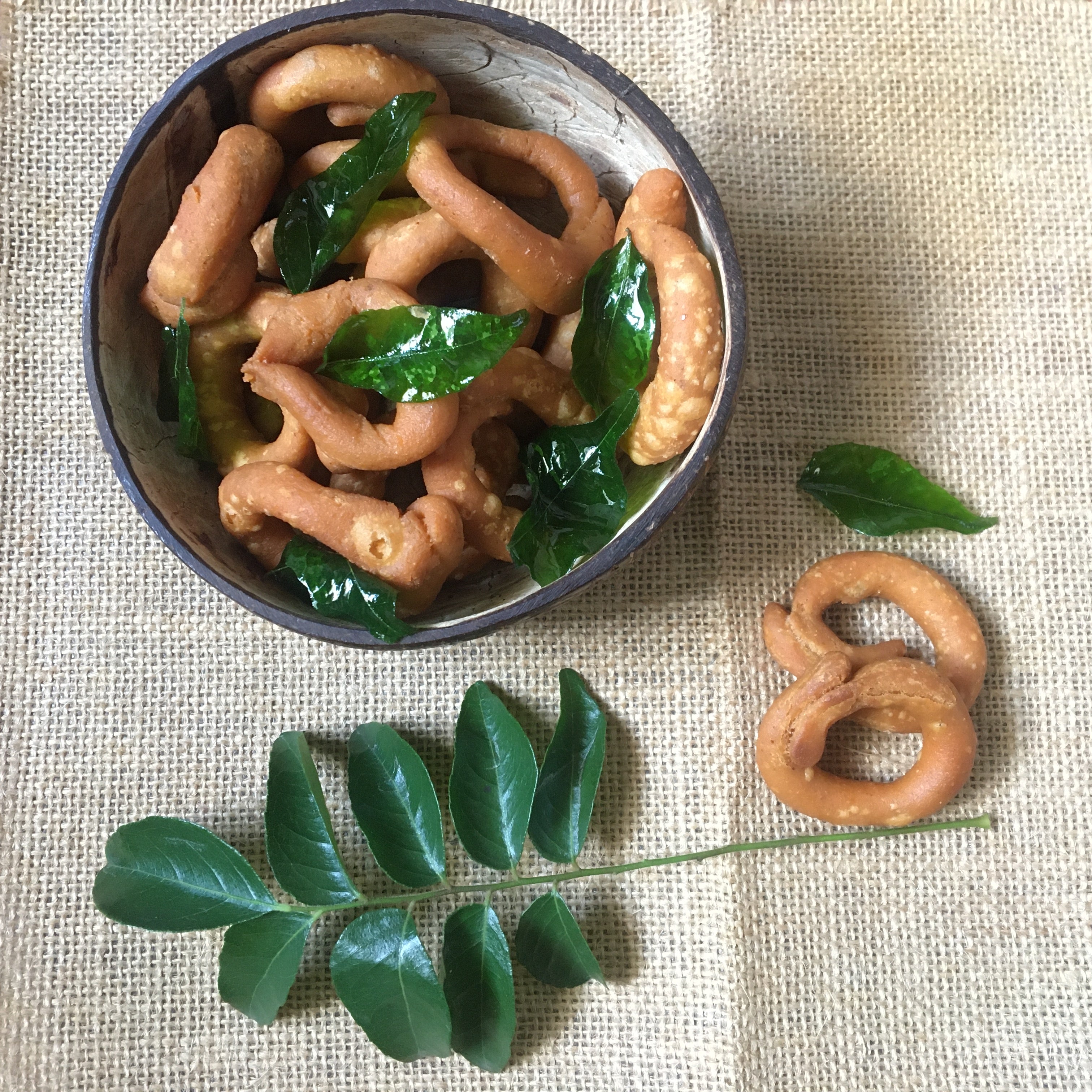
This spicy snack will remind you of those sultry summers that the entire family can snack on!
Feb 18 , 2021
Picture a quaint summer at your grandparents old house. It is a hot summery afternoon, almost 38 degrees, and a bunch of cousins and you are too tired to run around so you are lazing out in front trying to beat the heat and boredom in your own interesting ways. Softly yet suddenly, the smell of hot oil hits you first, now you're curious. What is that being cooked? This is followed by the sizzle of fresh dough hitting that hot oil and then the smell of spicy dough being fried and tossed around in the oil till its fished out and brought to cool on this enormous plate. The smells of afternoon elaichi tea and fresh Kodubale create a heavenly mixture for your olfactory senses.
Kodubale is a traditional spicy snack from Karnataka in the shape of small rings, made especially as part of the main ‘prasad’ during the festivals of Ganesh Chaturthi & Krishnashtami.
Kodubale comes from 2 words - Kodu (horns) and Bale (bangle). This is probably derived from the method of pulling the ends of the horn inwards into a bangle. The dish is made out of a combination of rice flour, red chillies, hing and other spices. While there are variations like rave kodubale which has chiroti rava added to the original kodubale recipe, there is a maida version of the same kodubale which are the crunchier version and mosaru kodubale which is the newest trend that is made out of curd (replacing water) is soft and soggy with a tinge of sour flavor from curd. With a slight touch of nativity it is known by different names and originates from a different place. This snack in the south with a little variation in ingredients is known as Chegodi/Chegoni in Andhra Pradesh and Telangana regions, Kadboli in Maharashtra.
This snack is readily available across most mithai shops across South India.
How about trying it at home fried in your preferred oil?




 Reg no-21220195000414.
Reg no-21220195000414.